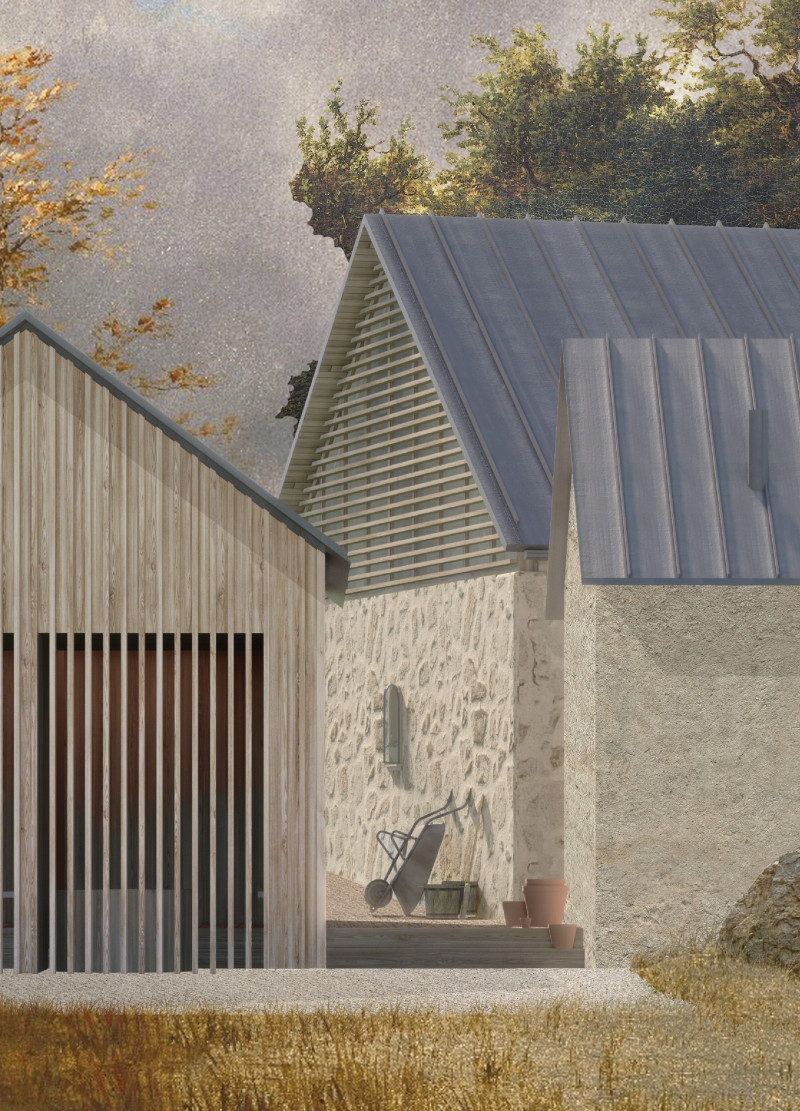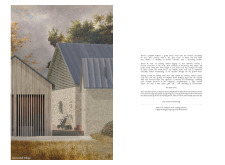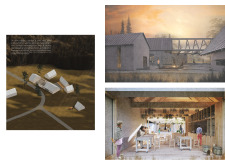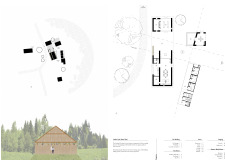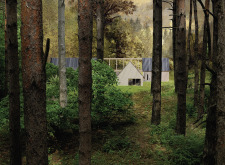5 key facts about this project
The Interstitial Village is situated in a peaceful natural setting, designed to strengthen the connection between built forms and the surrounding landscape. It focuses on community involvement through spaces that promote interaction with nature. The design concept revolves around creating a retreat where people can immerse themselves in activities related to tea-making and enjoy social gatherings.
Material and Structure
Timber framing is a key feature of the design, giving a warm and natural look to each building. This choice allows the structures to fit comfortably within the forest environment. At the center of the village is a rubble stone barn that serves as a historical anchor, linking the project to its local context. This material selection adds durability to the buildings and reinforces a sense of place, making it relatable to the surrounding landscape.
Spatial Configuration
The layout encourages movement across various functional areas, such as a tea-making barn, a workshop, and a dedicated tea house. Sunken gathering spaces and a covered courtyard are included to support social interactions, which are vital for community bonding. The presence of drying herbs suspended from wooden trusses adds sensory elements to the space, enhancing the overall experience of tea-making and enriching the environment.
Experience and Aesthetics
Every part of the village is designed to accommodate a variety of activities while maintaining a consistent architectural style. The way light enters the courtyard creates interesting shadows that change throughout the day, inviting visitors to see the buildings from different angles. Living, dining, and lodging spaces are arranged to facilitate both small, private gatherings and larger community events, underlining the importance of connections among people in this setting.
Design Detail
A notable aspect is the outdoor fire pit surrounded by seating, which acts as a gathering point. This feature not only serves practical purposes but also encourages social interaction among visitors. It creates a warm atmosphere where people can share stories within the calming backdrop of nature.


